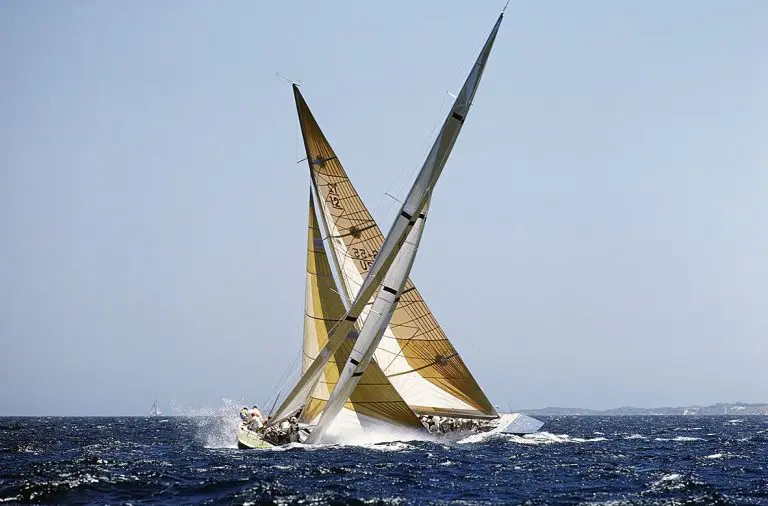“I’m not sure when the idea hit me but I decided immediately after the 1992 America’s Cup that it was winnable.”
– Sir Peter Blake
Apart from a couple of ephemeral connections with America’s Cup earlier in the century, New Zealand’s first serious interest developed in the wake of Australia’s success at Newport, Rhode Island, in 1983. Alan Bond’s 1983 victory changed the America’s Cup landscape and brought it much closer to home. Fremantle, Australia, would be the next venue and that made the challenge for New Zealand more feasible. Add to that the prospect of lifting the Auld Mug from the Australians and the temptation seemed almost too much to resist.
The Royal New Zealand Yacht Squadron (RNZYS) made it know it would like to be involved with an America’s Cup bid – as long as somebody could front up with the $6-7 million it would require. There was a flurry of activity, but as the March 1984 entry deadline approached, New Zealand’s hopes of an entry seemed to flounder.
Enter an unlikely saviour in the form of a Belgian-born businessman Marcel Fachler, who, unbeknown to anybody put up the $16,000 entry fee from his own pocket. A resident in Sydney, Fachler was contemplating expanding his business interests into New Zealand and saw the America’s Cup as a great platform. Along with Michael Fay, New Zealand’s vision of competing in the America’s Cup was realised.
1987 Challenge – KZ7
Until 1974, 12-metre yachts were built of wood. Alan Bond changed that when he introduced the aluminum 12-metre yacht, Southern Cross. After 1974, all the 12-metres were built of aluminum and this remained the case for the fleet preparing for the Fremantle contest in 1986-87. By this time however, the plastics age had well and truly established itself. Most grand prix race yachts – and even most production cruising – were built of fibreglass. The New Zealand marine industry had developed considerable expertise in fibreglass construction and it was decided that the challenge design team of Ron Holland, Laurie Davidson and Bruce Farr should work on the world’s first fibreglass 12-metre yachts.
This was a bold move from a rookie challenger. Usually, first time campaigns are more differential to history and tradition. But the impact was dramatic. New Zealand, the smallest nation ever to challenge for the America’s Cup, made its entry with a big statement. If Fay’s intention was to use the America’s Cup to position New Zealand internationally as a young energetic country, using state of the art technology and able to think outside the box then that was exactly what he achieved.
The KZ7 otherwise known as Kiwi Magic was top qualifier from the round robins and then defeated French Kiss 4-0 in the semi-finals, easing into the Louis Vuitton finals. Kiwi Magic was clear favourite going into the final against US boat Stars and Stripes 87. Despite being well matched for speed, the regatta saw the US yacht come out on top, winning the series 4-1. Stars and Stripes 87 went on to reclaim the America’s Cup by defeating Australian boat Kookaburra III 4-0.
1988 Challenge – KZ1
Michael Fay continued his plight for a successful New Zealand campaign and launched a second challenge on behalf of Mercury Bay Boating Club. The result of this was a huge new monohull New Zealand (KZ1). This was the biggest single-mast yacht the rules would allow. However, the US defenders responded by building a faster catamaran, Stars & Stripes (US1) which unsurprisingly defeated the New Zealand challenge.
1992 Challenge – NZL20
Michael Fay returned for one last attempt in 1992 which saw Team New Zealand facing an Italian opponent. Following some controversy over the Kiwi’s use of a bowsprit, New Zealand lost their lead and failed another America’s Cup challenge. Blake joined the 1992 Cup Challenge late on in the campaign so was unable to make a real impact. However, he gained invaluable experience and knowledge which he used for the next one.
Photo credit: Christian Fevrier


